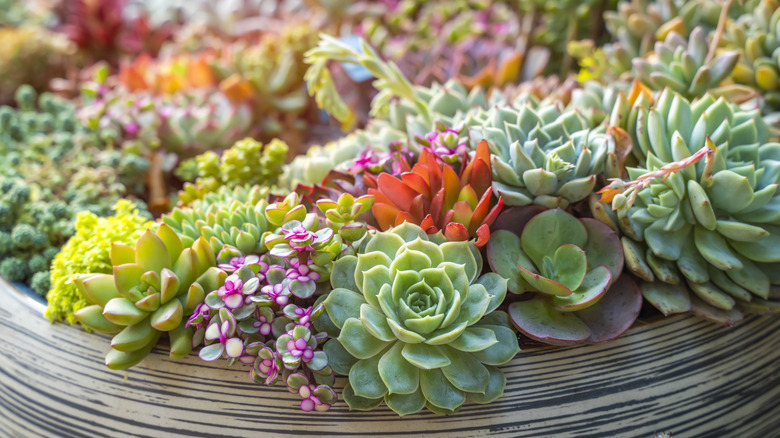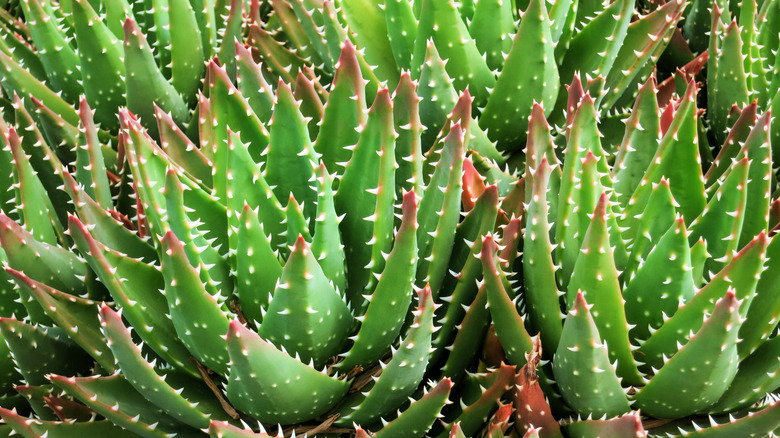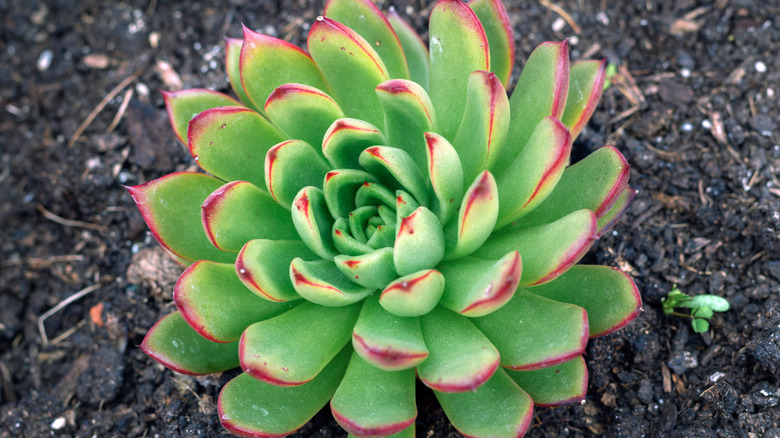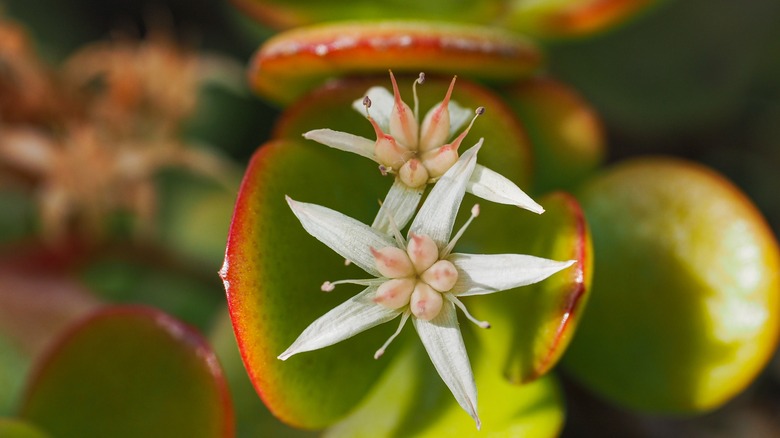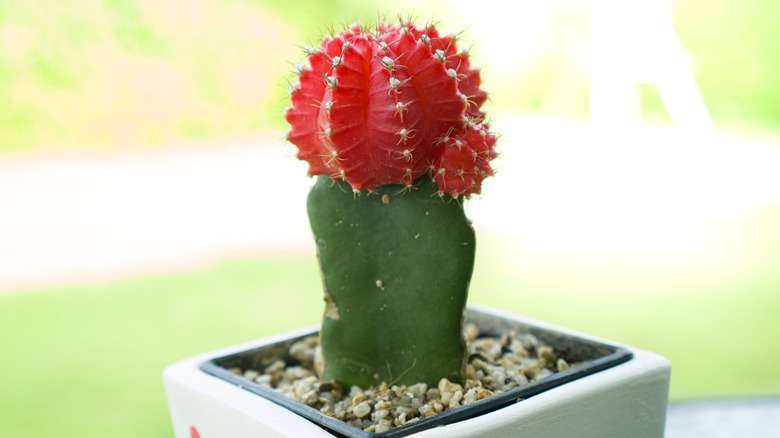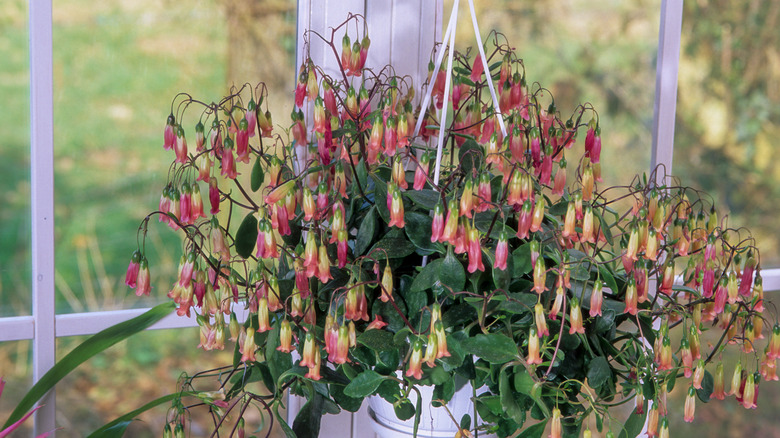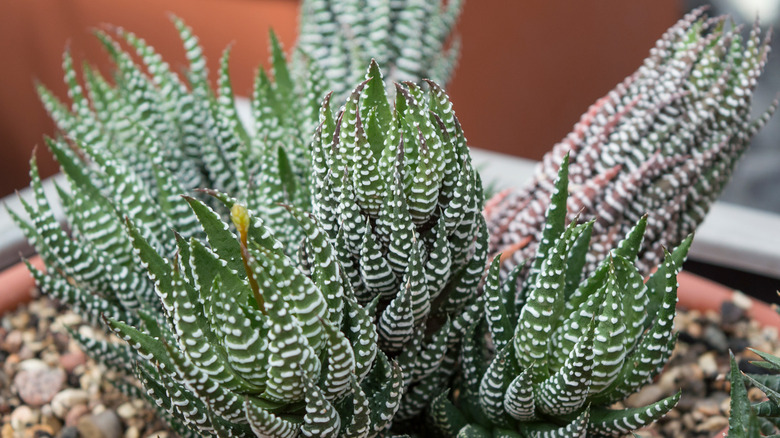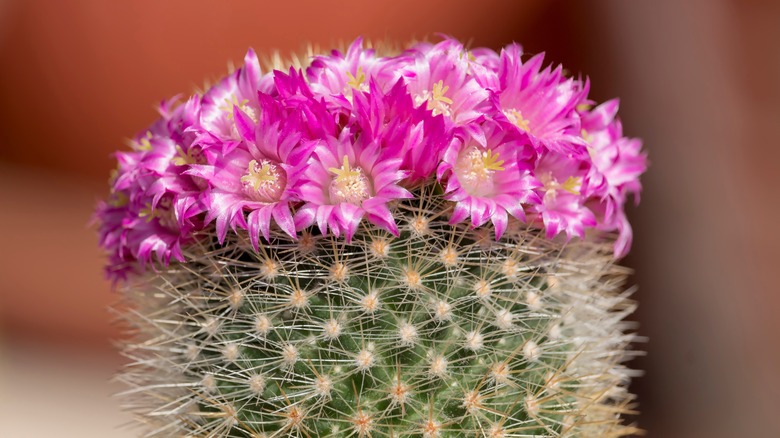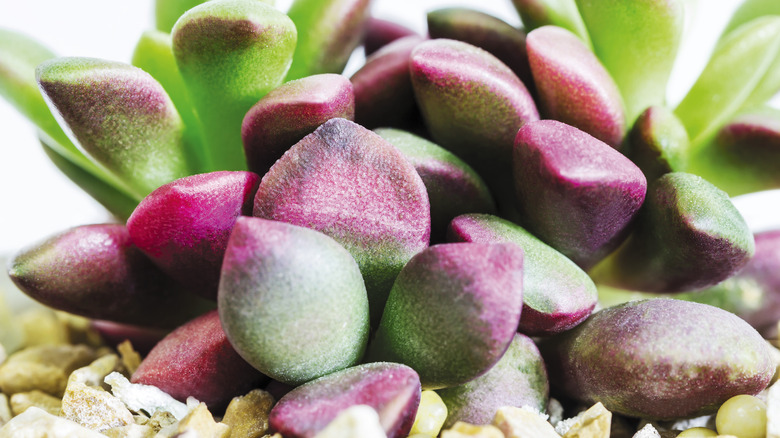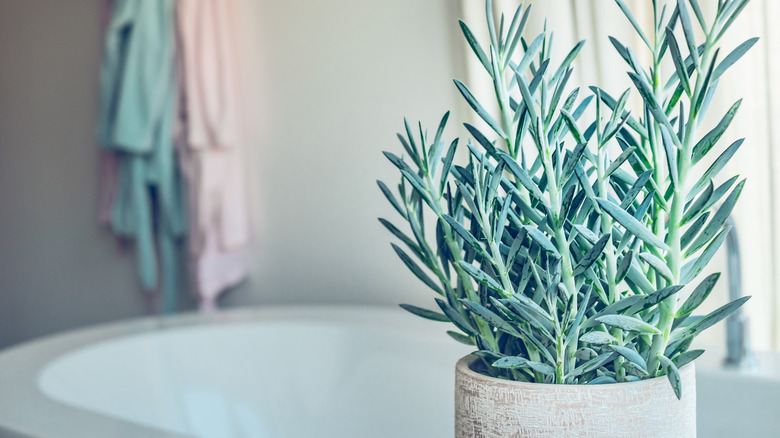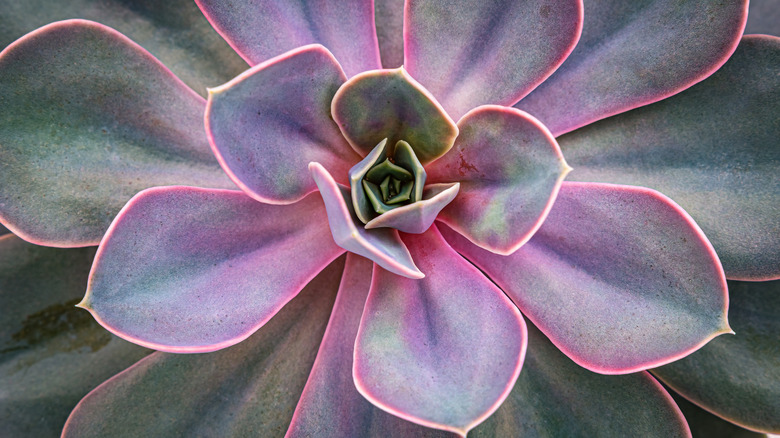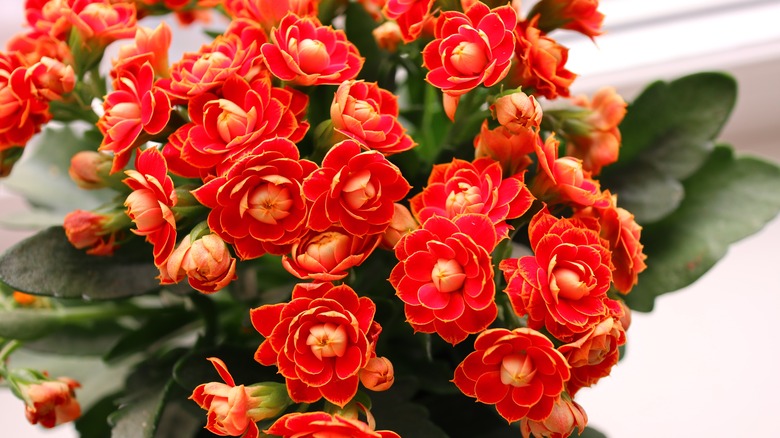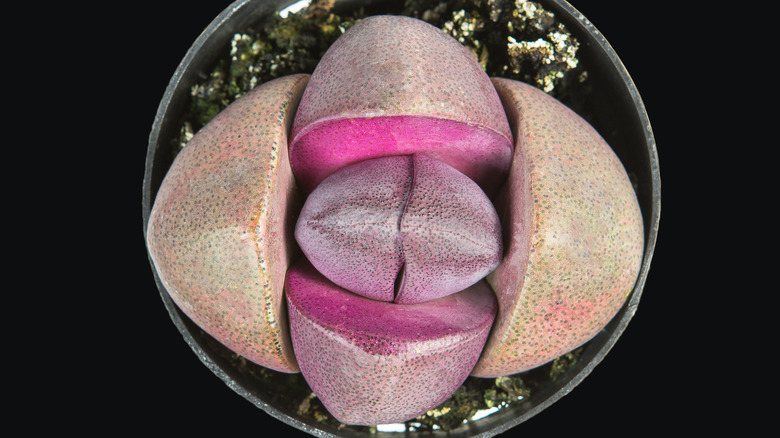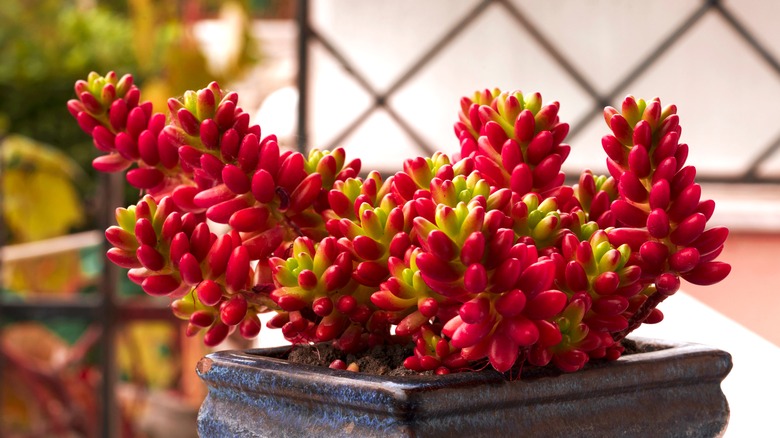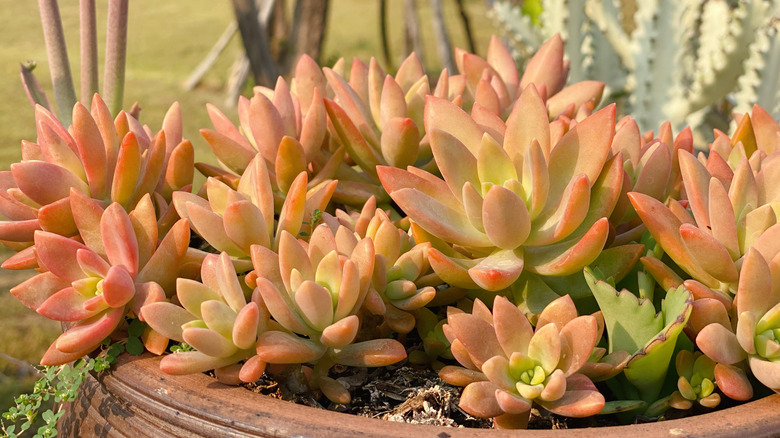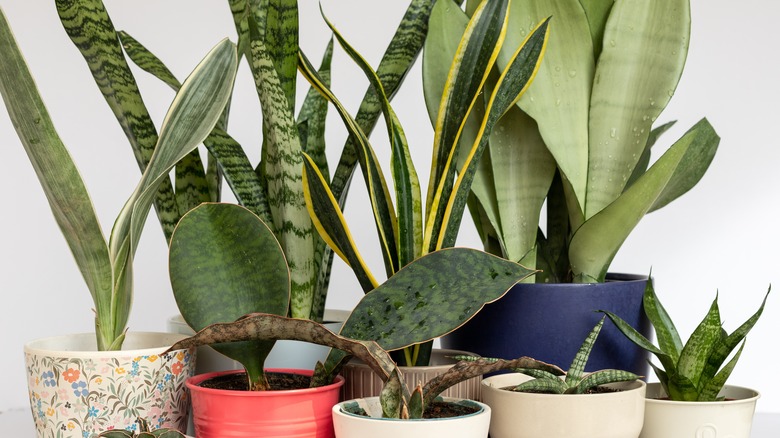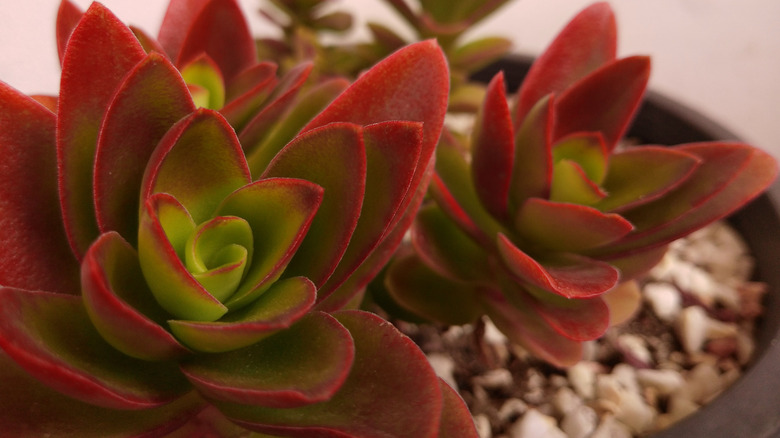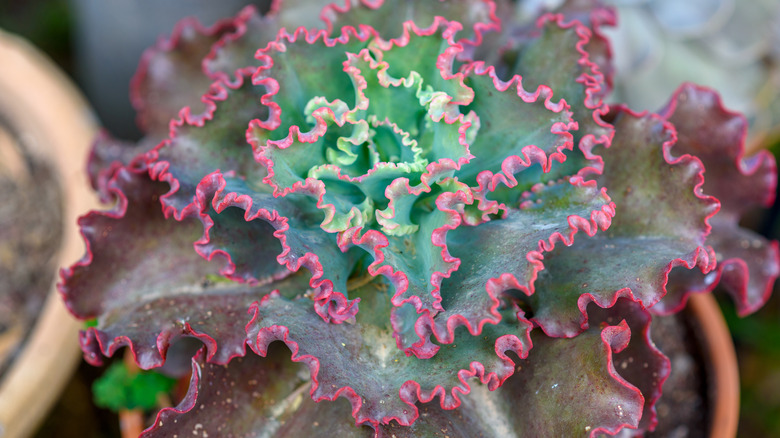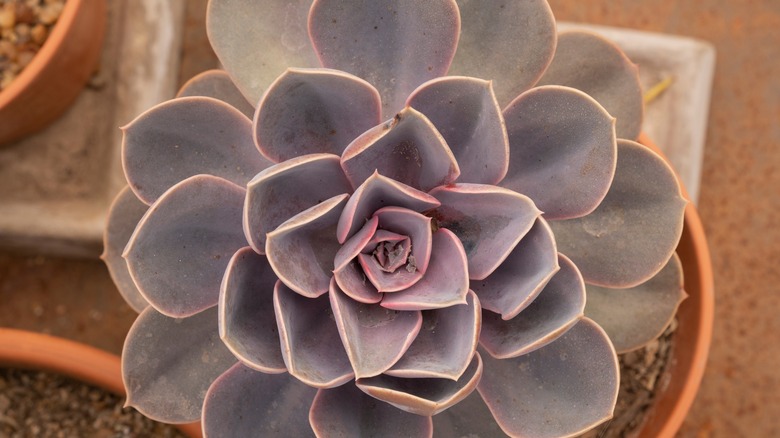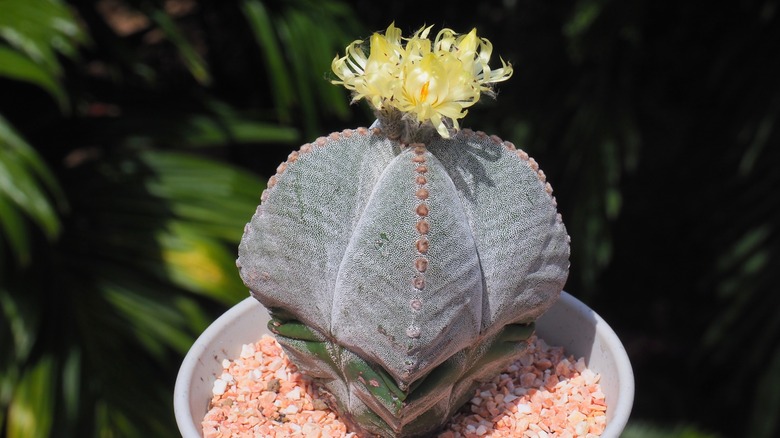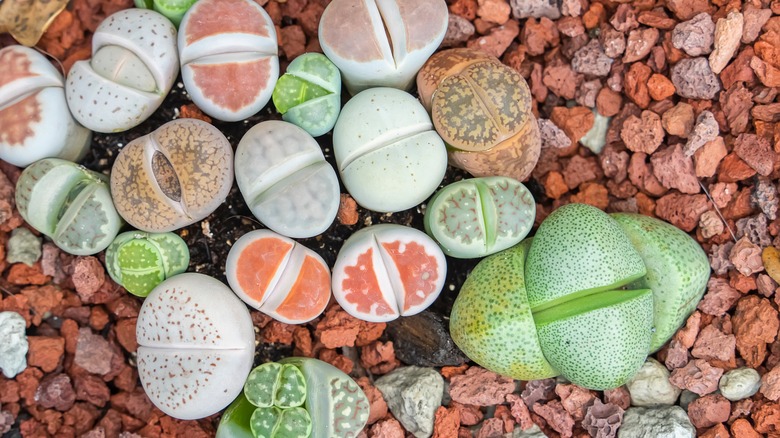20 Colorful Succulents That Will Thrive Indoors
If you still haven't given succulents a try, it's time for you to be introduced to the most colorful and ornamental varieties you can find. Succulents are a good option for any at-home gardener. They take up almost none of your time and they show off unique shapes and colors that most herbaceous perennials and annuals can't compete with. With the rise in popularity of cacti and succulents across the world, many plant parents have declared themselves to be succulent addicts. This is a common phenomenon that occurs when beginner or expert gardeners find out what they've been missing out on. Whether you need more inspiration on which succulents to buy, or you need an introduction to the bright world of indoor, drought-tolerant plants, this article is for you.
The University of Illinois informs us that we should be growing succulents for a variety of reasons. They are easy to grow, neglect-tolerant, physically unique, and unlikely to have problems with disease or pests. There are literally thousands of species and cultivars for you to choose from. Get started with our list of 20 colorful succulent houseplants.
1. Golden-toothed aloe
Golden-toothed aloe (Aloe nobilis) looks very similar to common aloe plants, but with one stark difference. This species of aloe has bright yellow and red tips, as long as it is grown in direct sunlight, as per Mountain Crest Gardens. If you're looking to add more natural color to your home, try this species instead of the average Aloe barbadensis.
Bloom Season: Summer
USDA Growing Zone: 9 to 11
Growing Conditions: Bright direct light
Soil Type: Well-draining potting mix
Size: 9 to 12 inches tall
2. Pulido's echeveria
Pulido's echeveria (Echeveria pulidonis) is an easy-to-grow succulent plant that is well-known for its fleshy, green-blue leaves that are tipped with red and purple, as described by San Marcos Growers. In the home, this plant needs little attention. Just be sure that you plant it in average, well-draining soil and place it in a moderately sunny window.
Bloom Season: Winter and spring
USDA Growing Zone: 9 to 12
Growing Conditions: Bright indirect light
Soil Type: Well-draining potting mix
Size: Less than 1 foot tall
3. Jade plant
The jade plant (Crassula argentea) is widely loved as a houseplant for its beautiful foliage that is dark blue-green. These leaves are thick and grow opposite of one another, which allows for a fuller look. The University of Florida notes that the jade plant can bloom after some years of being a houseplant. Typically it blossoms in the spring and its flowers are small and white.
Bloom Season: Spring
USDA Growing Zone: 10 to 11
Growing Conditions: Medium or low indirect light
Soil Type: Well-draining potting mix
Size: 2 to 4 feet tall and 1 to 3 feet wide
4. Moon cactus
The moon cactus (Gymnocalycium mihanovichii) is actually two different species of cacti grafted together. Planet Desert mentions that this process is necessary for the colorful cactus on top to survive due to its lack of chlorophyll. Because the two are stacked on one another, they create a unique cactus type that you can love for many years.
Bloom Season: Winter to spring
USDA Growing Zone: 11 to 12
Growing Conditions: Medium indirect light
Soil Type: Well-draining potting mix
Size: Up to 1 foot tall
5. Chandelier plant
The chandelier plant (Kalanchoe mangini) can be identified by its strange flowers that hang from the stems in addition to its circular dark-green leaves, as shown by Logee's. At first glance, it may not seem to resemble your average succulent, however, its easy-to-grow and drought-tolerant nature can give it away.
Bloom Season: Winter
USDA Growing Zone: 10 to 11
Growing Conditions: Bright indirect sunlight
Soil Type: Well-draining potting mix
Size: 8 to 10 inches tall
6. Zebra wart haworthia
Zebra wart haworthias (Haworthiopsis reinwardtii) are a bit colorful, and they have a beautiful pattern that catches the eye. This plant, which is known for its zebra-like stripes that are made up of raised white tubercles, is a relative of the better-known zebra plant, Haworthia attenuata. Unlike the zebra plant, the zebra wart shows off bright red color on the tips of its leaves, as Mountain Crest Gardens makes known.
Bloom Season: Summer
USDA Growing Zone: 10 to 11
Growing Conditions: Bright indirect light
Soil Type: Well-draining potting mix
Size: 3 to 5 inches tall
7. Pincushion cactus
The pincushion cactus (Mammillaria spp.) is a member of the cactus family, and it is among the most well-known cactus houseplants grown today. North Carolina State Extension states that this genus of short-growing cacti has about 200 species and cultivars that share many similar traits. Each of them features cylindrical stems covered in small spines, and they bear a halo of flowers in the summer and fall.
Bloom Season: Summer and fall
USDA Growing Zone: 10 to 11
Growing Conditions: Bright direct or indirect light
Soil Type: Well-draining potting mix
Size: 1 inch tall to 1 foot tall
8. Sunrise succulent
The sunrise succulent (Anacampseros telephiastrum f. variegatum 'Sunrise') is named for its thick leaves that are colored with a gradient of green, yellow, purple, and pink. These vibrant leaves, while short, can brighten a room or window sill with ease. All they need is moderate sunlight exposure, coarse cactus and succulent potting mix, and a little water, as advised by Mountain Crest Gardens.
Bloom Season: Summer
USDA Growing Zone: 10 to 11
Growing Conditions: Bright direct or indirect light
Soil Type: Gritty and well-draining potting mix
Size: 3 to 5 inches tall
9. Blue chalksticks plant
The blue chalksticks plant (Senecio serpens) can be grown as a groundcover or a container plant depending on the climate you live in. This warm-weather plant, which grows less than 1 foot tall, is characterized by upright and branching blue-green stems, as described by Monrovia. You can plant it alone or include it in a large container with other succulents such as Echeveria, Sedum, Aloe, and Kalanchoe species.
Bloom Season: Summer
USDA Growing Zone: 10 to 11
Growing Conditions: Bright direct light
Soil Type: Well-draining potting mix
Size: 1 foot tall and 2 to 3 feet wide
10. Echeveria 'Lola'
Echeveria 'Lola' (E. lilacina x E. 'Deresina') is a hybrid succulent species known for its pale green and purple foliage. According to Mountain Crest Gardens, it was created and bred by the famous Echeveria hybridizer, Dick Wright. The pearlescent color is relatively rare among echeveria species. To maintain its gorgeous hue, be sure to keep it near a bright light source.
Bloom Season: Spring
USDA Growing Zone: 10 to 11
Growing Conditions: Bright direct or indirect light
Soil Type: Cactus and succulent potting mix
Size: 3 to 5 inches tall
11. Florist kalanchoe
Florist kalanchoe (Kalanchoe blossfeldiana), which is also commonly referred to as flaming Katy, Christmas kalanchoe, and Widow's-thrill, is a popular kalanchoe species. Clemson Cooperative Extension describes the colorful houseplant as a flowering, low-maintenance succulent plant that can bloom in an array of colors that will brighten your home. When florist kalanchoe isn't in bloom, it still shows off dark green leaves that hold their own ornamental value.
Bloom Season: Early spring
USDA Growing Zone: 10 to 12
Growing Conditions: Bright indirect light
Soil Type: Well-draining potting mix
Size: 8 inches to 1 foot tall
12. Royal flush split rock
Royal flush split rocks (Pleiospilos nelii 'Royal Flush') are small succulent plants known for their strange growth habit. They are a slow grower that develops two to four large and angular leaves that are frequently referred to as egg-shaped. Planet Desert shows us that this cultivar of the split rock usually has dark purple leaves and a bright green center, making it more ornamental than the common split rock.
Bloom Season: Early spring
USDA Growing Zone: 9 to 10
Growing Conditions: Bright direct light
Soil Type: Well-draining potting soil
Size: Less than 6 inches tall
13. Jelly bean plant
Jelly bean plants (Sedum rubrotinctum) are so interesting because they almost look fake. The unbelievably bright and glossy foliage of the plant appears so polished and perfect that its ornamental value cannot be calculated. As told by Benara Nurseries, the jelly bean plant's foliage has a clear resemblance to the popular candy, yet it should not be eaten.
Bloom Season: Winter
USDA Growing Zone: 9 to 11
Growing Conditions: Bright, medium, or low indirect light
Soil Type: Well-draining potting mix
Size: 4 to 6 inches tall and wide
14. Coppertone stonecrop
The coppertone stonecrop (Sedum nussbaumerianum) is a low-growing succulent in the Crassulaceae family. During each season, its fleshy foliage is colored yellow and orange, and its stems are red. Like other members of the stonecrop family, this one cannot withstand temperatures below freezing, according to San Marcos Growers. However, it is still considered low maintenance due to its ability to go long periods without water and attention.
Bloom Season: Winter to spring
USDA Growing Zone: 9 to 11
Growing Conditions: Bright direct light
Soil Type: Well-draining potting mix
Size: 1 foot tall and 2 to 3 feet wide
15. Snake plant
Snake plants (Sansevieria trifasciata), as Penn State Extension explains them, are a forgiving and long-living succulent species with many different cultivars. Your snake plant may be very bright and colorful depending on the variety you choose. Some can have bright yellow or cream striping and others have uniquely shaped, upright foliage.
Bloom Season: Spring
USDA Growing Zone: 9 to 11
Growing Conditions: Medium to low indirect light
Soil Type: Well-drained potting mix
Size: 6 inches to 3 feet tall depending on the variety
16. Campfire Crassula
Campfire Crassula (Crassula capitella) is a compact, yet widely spreading succulent variety with multicolored foliage. Typically, the leaves of the plant show off a gradient of green to red color, but the tips may also be orange or pinkish. Campfire Crassula is best grown in a wide container, and it may be planted alongside other succulents with similar needs, as suggested by Monrovia.
Bloom Season: Summer
USDA Growing Zone: 9 to 10
Growing Conditions: Bright direct or indirect light
Soil Type: Cactus and succulent potting mix
Size: 6 inches tall and 2 to 3 feet wide
17. Bittersweet succulent
The bittersweet succulent (Echeveria gibbiflora 'Bittersweet') can be described as an unusual echeveria cultivar with ruffled brown, green, and red leaves. Even though its leaves are darker in hue, the color still stands out, especially when it is situated in bright lighting. RHS advises gardeners to plant the bittersweet succulent in a well-draining cactus compost mix and provide it with little water.
Bloom Season: Summer
USDA Growing Zone: 9 to 11
Growing Conditions: Bright indirect light
Soil Type: Well-draining potting mix
Size: 12 inches tall
18. Fred Ives Echeveria
Fred Ives Echeveria (Graptopetulum paraguayense × Echeveria gibbiflora) is a wonderful hybrid echeveria species that makes for a happy and adaptable houseplant. It features reddish-purple leaves that are somewhat translucent in the sun, as explained by Proven Winners. Houseplant fanatics love the Fred Ives cultivar for its easy care requirements and large growth habit.
Bloom Season: Spring
USDA Growing Zone: 9 to 11
Growing Conditions: Bright indirect light
Soil Type: Well-draining potting mix
Size: 6 to 10 inches tall
19. Bishop's hat cactus
The bishop's hat cactus (Astrophytum myriostigma) is a special cactus that is shaped like a star or a bishop's hat. Its body is blue-green, but that color is typically obscured by the many tiny white trichomes that give it a grayer color and a velvety texture, as stated by The University of Arizona. In the summer, you can expect the bishop's hat cactus to bloom with big yellow flowers.
Bloom Season: Summer
USDA Growing Zone: 7 to 11
Growing Conditions: Bright direct or indirect light
Soil Type: Well-draining potting mix
Size: Up to 5 feet tall
20. Living stones
Living stones (Lithops spp.) are an adorable species of succulents that grow no larger than a pebble. They appear in shades of pink, orange, blue, and green, and many of them can be planted in the same container for a spectacular show of color. Mountain Crest Gardens warns that these succulents are difficult to grow. They should be planted in coarse soil, situated in direct sunlight, and only watered during their growing season.
Bloom Season: Fall
USDA Growing Zone: 10 to 11
Growing Conditions: Bright direct light
Soil Type: Well-draining potting mix
Size: 1 to 3 inches tall
